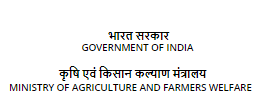Prototype automatic feeder for aquaculture
Background:
In aquaculture systems, the cost of feed is the highest operational cost while more than 35% of
the feed applied to aquaculture system ends up as particulate matter. Excess food gets deposited
on bottom and if allowed to remain within the system, their decomposition will consume
dissolved oxygen, produce ammonia and other toxic substances such as hydrogen sulphide. On
the other hand, when food is insufficient, the competition and predation are fostered causing
alterations in endogenous fish feeding rhythms; these modifications affect the feed conversion
rate and the subsequent composition of fish flesh.
To minimize fish feeding problems, various feeders and feed consumption monitoring systems
have been proposed in scientific research. Modern aquaculture in the whole world emphasizes
higher production of fish from limited areas. Now-a-days semi-intensive and intensive cultural
practices are being adopted on a large scale to get higher production. In these types of farming,
fish is cultured in a controlled environment with artificial compounded feed containing adequate
proteins, carbohydrates, fatty acids, minerals, etc. to enhance the survival and yield of fish.
Therefore, application of feed is a crucial factor. In one of the simplest and widely followed
methods in aquaculture, feed is broadcasted manually by aqua-farmers in aquarium, ponds,
tanks and other water bodies culture system. Such practices are labour-intensive and enhance
the operational costs. Moreover, scheduled feeding of accurate quantities; especially, during the
night, is not practical at many sites. Even in small pond or aquarium, it becomes very costly and
scheduled feeding with correct quantity becomes very difficult.
An automatic feeding system for aquaculture has more potential and profitable compared to
manual feeding systems. The automatic feeding systems are not affected by shortage of
manpower and the fish feed can be applied at required time in desired quantity by adjusting the
automatic feeder properly. With the time based automatic feeder, feeding time and quantity of
feed can be monitored for an efficient food management in intensive aquaculture systems
including aquariums.
With the objective of providing an excellent feed management system, a prototype of timer
based automatic feeder has been designed and developed which will effect significant savings in
the cost of food and labours and reduce the feed conversion ratio. This cost effective and user
friendly automatic feeder minimizes water pollution and production of ammonia in aquaculture
systems and thereby contribution in the growth of aquaculture industry.
Technology Details:
The timer based automatic fish feeder is designed to supply food to fish / aquatic animals at
regular predetermined time intervals in preferred quantity to avoid wastage of food and
minimize the production of unwanted toxic pollutants like ammonia in any given aquatic system
including aquaria. The automatic fish feeder is a device made up of PVC or FRP container
mounted on a support structure with its mouth put upside down. The container is designed to
hold the pre-decided quantity of fish-feed. At the bottom of the device, a feed control wheel is
fitted in the mouth of the feeder. The rotation of wheel is controlled by heavy duty motor. The
rotational speed of the motor is controlled by virtue of a speed control regulator which in turn
controls the speed of feed control wheel. Electricity is supplied to the motor through a converter
which converts AC (alternate current) to DC (direct current). The timer ensures supply of
electricity to AC-DC converter at predetermined point of time for particular duration to facilitate
the rotation of feed control wheel. Number of rotations of feed control wheel depends upon the
quantity of feed to be dropped at given point of time. The brief about automatic feeder is given
below:
• It dispenses exact amount of feed at predetermined time at a designated location where
it is fixed
• Quantity and time specific adjustments are possible. However, prototype is designed for
2 to 10 g feed per day.
• Multiple time dispensation causes the maintenance of feed integrity in water and may
improve consumption
• Due to exactness of the feed, the wastage of feed is minimized while enhancing the water
quality


